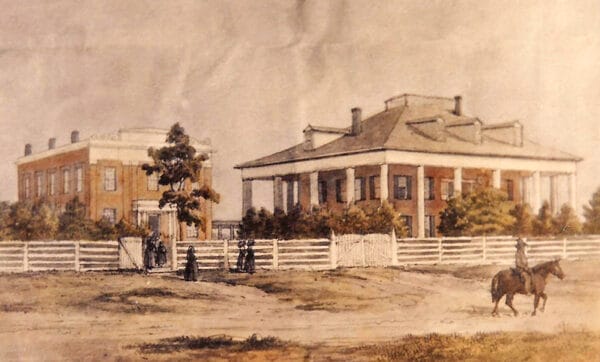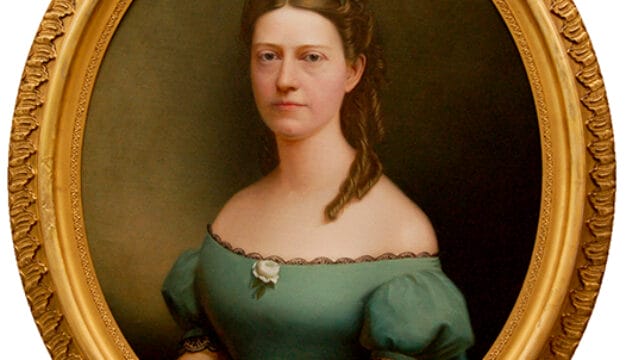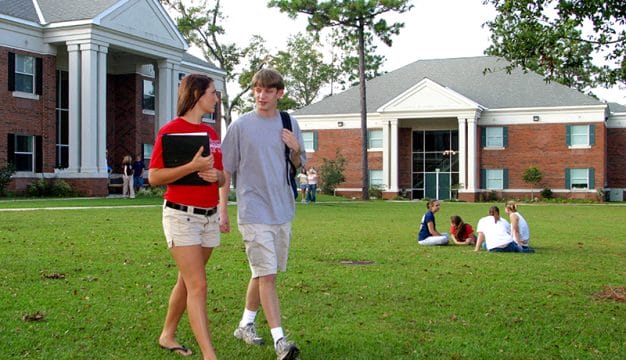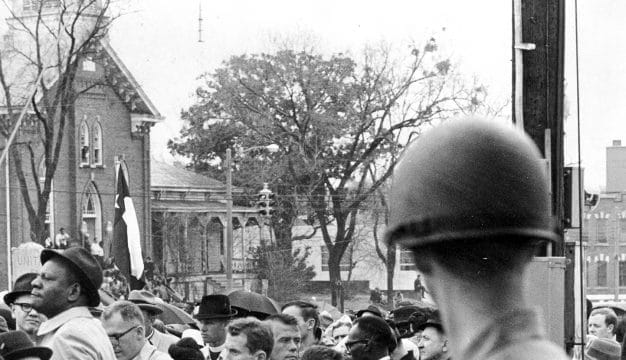Florence Synodical Female College
The Florence Synodical Female College was established in Florence, Lauderdale County, to provide a higher education to young white women. Sometimes referred to by the shortened title of Florence Synodical College, the school was preceded at this location by the Florence Female Academy. The academy had been established by an act of the Alabama State Legislature and opened in 1847. They were similar to the few other schools in the state at that time catering to the upper classes.
 Florence Synodical Female College, 1860
By the early 1850s, the Florence Female Academy was in financial distress and facing bankruptcy. The Board of Trustees for the school met on November 25, 1854, to discuss transferring its management to the Presbyterian Synod of Nashville, Tennessee. The mayor and alderman of Florence had recommended that the use and control of the school be transferred to the Synod so the school, a valuable asset in the community, could be maintained. The board of trustees agreed to the move, and the Presbyterian Synod of Nashville was authorized to take control of the academy’s two buildings, land, and equipment. Sometime later, the school came under the leadership of the Presbyterian Synod of Memphis.
Florence Synodical Female College, 1860
By the early 1850s, the Florence Female Academy was in financial distress and facing bankruptcy. The Board of Trustees for the school met on November 25, 1854, to discuss transferring its management to the Presbyterian Synod of Nashville, Tennessee. The mayor and alderman of Florence had recommended that the use and control of the school be transferred to the Synod so the school, a valuable asset in the community, could be maintained. The board of trustees agreed to the move, and the Presbyterian Synod of Nashville was authorized to take control of the academy’s two buildings, land, and equipment. Sometime later, the school came under the leadership of the Presbyterian Synod of Memphis.
The new school was chartered by the Alabama Legislature in December 1855 as the Florence Synodical Female College. Its mission was to prepare young women for educated conduct by developing character and social skills for all students. Students were provided with lessons in diction and social graces, but education in the arts was the main focus of the curriculum. The school began accepting students before the year was over: white females were eligible for acceptance without regard to social class or religion. William H. Mitchell, who also served as the pastor of the First Presbyterian Church in Florence, was the first president. Robert M. Patton, who would serve as a governor of Alabama from 1865 to 1867, was the first chairman of the board.
The college consisted of two brick buildings, and their construction was supervised by Zebulon Pike Morrison, a contractor and cabinet maker by some accounts. When the city of Florence was designed, the Cypress Land Company had set aside this city block for use by an educational institution. One building, a Georgian two-story structure, faced present-day Wilson Park and housed the academic offices, classrooms, library, gymnasium, and dining room. The second building, a Greek Revival structure surrounded by large columns, faced Seminary Street and was used as a dormitory by students whose families did not live in the area. Fully furnished rooms were shared by two students, who enjoyed hot and cold running water and modern baths of the era. In 1894, the cost for tuition and boarding fees was $200 for the school year, a large sum for the time period. Special fees were charged for music, art, elocution, and language classes, as well as laundry services. Tuition alone was far more affordable, with collegiate classes placed at $5 a month, or $25 a session, and lesser grades at a cheaper rate. Daughters of clergymen were given free tuition and a discount on boarding fees.
An average of six or seven faculty, as well as a cook and a janitor, comprised the school’s staff. Typical enrollment for the school was 100 students, with numbers never surpassing 140. A matron supervised and cared for the girls who boarded at the school. Student life was strictly regulated and supervised by faculty and staff. A strict schedule began at 6:30 a.m. and ended with lights out at 10:00 p.m. The college strongly discouraged parents from allowing their children to board anywhere but at the school, citing the risks of a private home such as contact with young men and lack of constant supervision. Females of the period were closely guarded to protect them from physical harm as well as retain purity in heart and mind. Parents were also discouraged from allowing their daughters to come home for visits during the semester. Only immediate family members were allowed to visit and only on certain days. Students were accompanied by a chaperone if they went out during the day and were never allowed to leave campus after dark. At various times during the school’s operation, students were required to wear uniforms that met specific standards to prevent extravagant dressing that would be considered a distraction. During the 1894-1895 school year, monthly receptions allowed students and their friends to interact. Students were required to attend the church of their choice each Sunday.
In addition to Alabama, students came from Arkansas, Mississippi, and Tennessee. One class included local Florence resident Sallie Independence Foster, whose journals describe her experiences at the school and the people who taught her. One notable episode recorded in the diary was the arrest of Pres. Mitchell by Union forces after he had prayed for the Confederacy during his church service. Foster’s diaries are held at the University of North Alabama‘s Archives and Special Collections and include much discussion of life in Florence during the Civil War.
The college was divided into several departments and further divided into schools. The First and Second Intermediate Departments taught classes on a lower skill level that provided a foundation for collegiate courses. Subjects included arithmetic, spelling, geography, history, diction, writing, composition, free-hand drawing, class elocution, and French conversation. The Collegiate Department was divided into seven schools: Natural Science, Philosophy, Mathematics, Ancient Languages, English and Literature, Modern Languages, and Elocution. Freshman courses included mythology, Latin grammar, algebra, physiology and hygiene, French, and German. Senior courses included trigonometry, psychology, logic, ethics, astronomy, art criticism, literature, and Latin composition. Postgraduate coursework was also offered in literature, dramatics, and business. Another class prepared students to be school teachers. The school offered three degrees: Mistress of Literature, Mistress of Science, and Mistress of Arts.
The Florence Synodical Female College closed in 1893 as a result of financial difficulties from rising costs and competition from other schools that led to a decline in attendance. In 1895, the property and buildings were sold and the proceeds used to pay outstanding school bills. The dormitory was torn down in 1911, and today the Florence Post Office and John McKinley Federal Building occupy the location. Tombigbee Street, which was constructed many years after the school closed, runs through part of the original school grounds. Following the school’s closure, the classroom building housed several businesses and the local chapter of the Elks Club until it was demolished in 1972. In 2011, the Florence Historical Board erected a historical marker at the school’s former location.
Additional Resources
McDonald, William Lindsey. A Walk Through the Past: People and Places of Florence and Lauderdale County, Alabama. Florence, Ala.: Bluewater Publications, 2003.
Northern Alabama: Historical and Biographical Illustrated. Florence, Ala.: Bluewater Publications, 2003.



